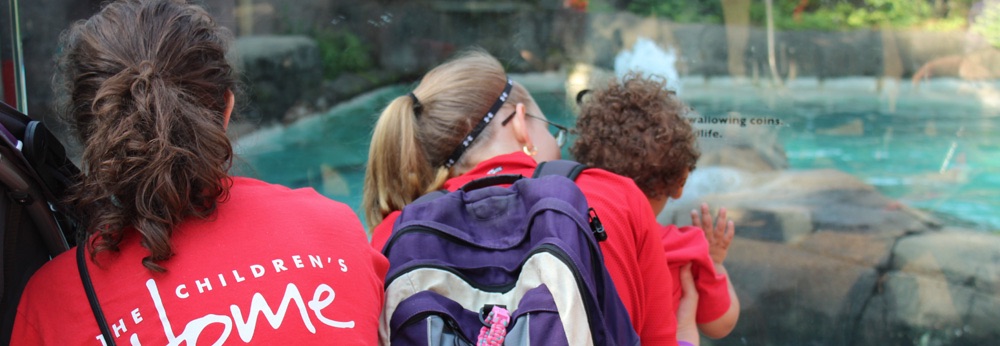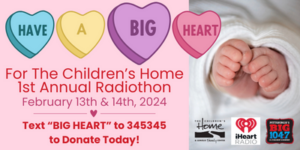The Importance of Being Invited In
– Kristie Lindblom, MA, Permanency Social Worker
*Content warning: mention of child abuse related to identity and mention of non-fatal suicide attempt*
Three years ago, I got a call from my boss. A local county child welfare office had called our director with a request on a case for someone who is particularly affirming of LGBTQ+ folks work with a 12-year-old youth they were referring to our agency for Child Prep services. My supervisor asked me to take it, and I prepared myself to read the profile. This child had come to the county’s awareness after they came into school bruised all over and with a broken arm. Upon investigation, this was not the first instance of abuse. The child’s family had found clothes they thought were too feminine for the gender the child had been assigned at birth and had found love notes to a peer who was assigned the same gender as their child. The result was always physical “discipline”, and this was the last instance.
After being separated from his first family, the youth was placed in an affirming home with two dads who fought and clawed their way to get their child the services and supports they needed. These dads went above and beyond. The youth was able to use the appropriate restrooms they needed at school, receive trauma therapy, and obtain services from the very best experts in the field of gender care. That kid is now 15. They cheer on their school’s cheerleading squad, are doing well academically, and have been adopted by their dads. They still struggle with the trauma of what happened to them and how that relates to their identity, but they are doing well overall.
Contrast this with another youth I worked with at about the same time. His foster home had been disrupted due to his foster parents’ lack of acceptance for his identity and he was placed in a residential facility where he was constantly misgendered. One of the worst calls I have received in my life was the one in which I learned he had been admitted to a psychiatric hospital after trying to end his life due to rejection and lack of acceptance. In thinking about these two kids, it’s clear: a family can literally save the life of a child simply by creating a safe and affirming home for that child to land. At The Children’s Home, our Adoption & Permanency team prioritizes making sure that our families are safe and affirming, because we understand that these are not one-off cases. We offer initial training, ongoing training, and counseling and support to help.
Research tells the story. There is clear overrepresentation of LGBTQ+ youth in foster care. Studies have found that about 30 percent of youth in foster care identify as LGBTQ+ and 5 percent as transgender, in comparison to 11 percent and 1 percent of youth not in foster care (Baams, Russel, & Wilson 2019). Furthermore, LGBTQ+ youth of color are disproportionately overrepresented in the child welfare system and stay longer in child welfare systems, while also having an increased risk of experiencing discrimination and violence compared to their peers (Huggins et al., 2019).
While many of these young people are separated from their families for many of the common reasons other children are, we know victimization and rejection from caregivers can result in LGBTQ youth involvement in the foster care system (Newcomb et al., 2019). This is strongly associated with greater suicide risk among youth in general (Brown, 2020). Beyond that, research by the Trever Project in 2021 shows LGBTQ youth who had been in foster care had nearly four times greater odds of being kicked out, abandoned, or running away due to treatment based on their LGBTQ identity compared to those who were never in foster care, with the greatest risk to transgender and non-binary youth. Overall, 40% of transgender and nonbinary youth in foster care reported being kicked out, abandoned, or running away due to treatment based on their LGBTQ identity compared to 17% of cisgender LGBQ youth in foster care.
With these statistics in mind, it is paramount that any home that welcomes in a child be affirming to LGBTQ individuals. Just as one cannot predict the identity of a biological child, a youth who joins your home may have aspects of their identity they have not yet understood or felt safe to share yet. We require training for all foster parents around cultural humility and support growth and learning around these ever-developing understandings.
The Children’s Home of Pittsburgh works closely with families and children who identify as LGBTQ+ on a daily basis. Whether when working with birthing parents and couples making an adoption plan for their baby, families hoping to adopt, those attending our counseling services, or foster parents and foster children, we at The Children’s Home of Pittsburgh would like to recognize our LGBTQ+ clients on National Coming Out Day on October 11, 2023, and would like to offer the following tips on how to respond when someone chooses to invite you in and share their identity with you.
- Listen and let the person speak. This is *their* moment!
- Respect their pace by letting them share what they are comfortable sharing.
- Affirm and validate their identity and feelings about who they are. They know themselves best!
- Ask clarifying questions rather than invading ones.
- Support them by thanking them for sharing this information with you and asking how you can help them navigate their identity– and follow through!
Baams, L., Wilson, B. D., & Russell, S. T. (2019). LGBTQ Youth in Unstable Housing and Foster Care. Pediatrics, 143(3), e20174211.
Brown, L. A. (2020). Suicide in foster care: a high-priority safety concern. Perspectives on psychological science, 15(3), 665-668.Dettlaff, A.J., & Boyd, R. (2020).
Transgender identity and experiences of violence victimization, substance use, suicide risk, and sexual risk behaviors among high school student–19 states and large urban school districts, 2017. MMWR, 68(3), 65-71.Johns M.M., Lowry R., Haderxhanaj L.T., et al. (2020).
“LGBTQ & Gender-Affirming Spaces.” The Trevor Project, 14 Sept. 2021, www.thetrevorproject.org/research-briefs/lgbtq-gender-affirming-spaces/.
Prejudice, social stress, and mental health in lesbian, gay, and bisexual populations: conceptual issues and research evidence. Psychological Bulletin, 129(5), 674-697.Newcomb, M. E., LaSala, M. C., Bouris, A., Mustanski, B., Prado, G., Schrager, S. M., & Huebner, D. M. (2019).
The influence of families on LGBTQ youth health: A call to action for innovation in research and intervention development. LGBT health, 6(4), 139-145.Nugent C.N., Ugwu C., Jones .J, Newburg-Rinn S., & White T. (2020).Disproportionality Rates for Children of Color in Foster Care Dashboard. National Council of Juvenile and Family Court Judges. Available at: https://ncjj.org/AFCARS/Disproportionality_Dashboard.aspx Accessed on April 12, 2021.



